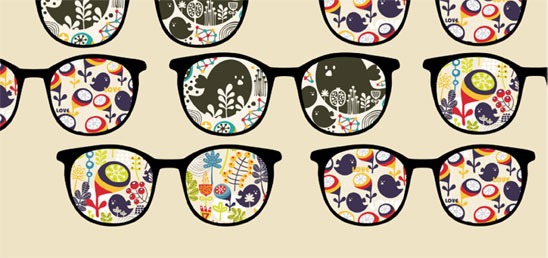The right marketing materials can help simplify dispensing premium lenses
By Brian P. Dunleavy
 Let’s face it: Selling frames is easy – at least when you compare it to pitching lenses. Frames are the first things patients see when they walk into most optical stores. They can shop the frame boards, pick out styles they like and check a nearby mirror to see how they look. Computerized frame-on-face programs have made the process even easier. Sure, opticians have to deal with stubborn or overly price-conscious patients now and again, but the benefits of frames are tangible and, thus, easy to demonstrate.
Let’s face it: Selling frames is easy – at least when you compare it to pitching lenses. Frames are the first things patients see when they walk into most optical stores. They can shop the frame boards, pick out styles they like and check a nearby mirror to see how they look. Computerized frame-on-face programs have made the process even easier. Sure, opticians have to deal with stubborn or overly price-conscious patients now and again, but the benefits of frames are tangible and, thus, easy to demonstrate.
Not so lenses. Yes, lens manufacturers and optical laboratories have done their best to develop point-of-purchase (POP) materials that highlight the unique selling points of their products, but it’s difficult to demonstrate exactly how patients will see out of their new lenses before they have been processed according to their individual prescriptions.
“Given all the new technology available, having effective lens displays is more important than ever,” notes David Watson, an instructor at the BC College of Optics in Surrey. “Opticians really need to sit down with patients and discuss their home and work environments to properly assess exactly what lenses and coatings are best for them.”
According to Watson, having the right sales aids at your disposal can make this process easier. Here are some tips:
- Too much or not enough?
Watson cautions against having too many lens-related displays in the store, as they can ultimately confuse patients. Study your patient base. Does your optical/practice have a pediatric focus? Then make sure you have POP for polycarbonate. Have a lot of young, fashion-conscious patients? Then high-index and free-form sales aides are a must.
- Ask around.
More and more lens manufacturers and labs are creating POP for their customers. Find out what’s available. Watson also recommends visiting optical stores in other markets – he likes to do this while on vacation – to see how they display lens technology.
- There may be an app for that.
With the advent of free-form lenses, lens manufacturers have created special applications for smartphones, tablets and other devices to enable eyecare professionals to easily collect the additional measurements – including monocular PDs, fitting height, vertex distance, wrap and pantoscopic tilt – needed to fit these products. While not POP per se, these apps demonstrate to patients the high-tech nature of these lenses better than any samples, says Brian Paul, OD, an optometrist at Brantford Medical Centre in Ontario. “When they see that, they know they are getting something special: a lens with customized optics and cosmetic benefits,” he explains. “It’s the best sales tool [for free-form lenses], even though it’s really not a sales tool.”
- Take questions.
What patients ask about lenses can be a guide to what lens POP you need in your store. If a lot of patients come in asking about how photochromics work, for example, it might be time to ask vendors about any available displays – or create your own.
- If you like it, frame it.
Lens POP you create yourself doesn’t have to be that elaborate: a nice, trendy frame with an uncoated regular plastic on one side and an anti-reflective coated high-index lens on the other can be very effective. “It’s a simple way to let customers see the difference in thickness, weight and cosmetics,” Watson says.
Whether you use premade POP or create your own, it is imperative that the materials fit the design and tone of your store – and match the priorities of your patient base. Even the best lens sales aides won’t be as effective as frame boards, but they can make dispensing spectacles easier.
“Whatever you do, it must be creative and eye-catching – something that will draw a customer, like a wall display with lenses as art,” Watson notes. “Displays are effective at getting patients to notice what’s available, and the best ones work so well a patient will ask about a product instead of the optician having to start the conversation.”







